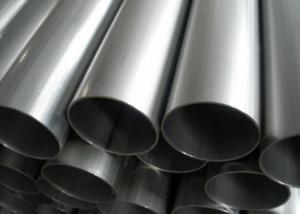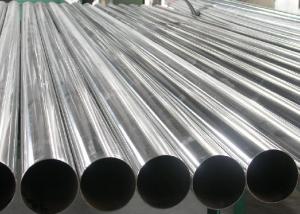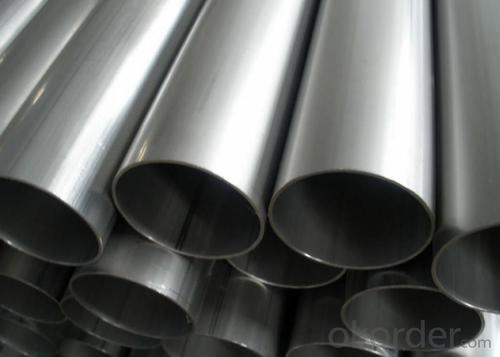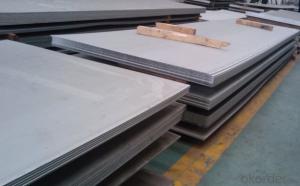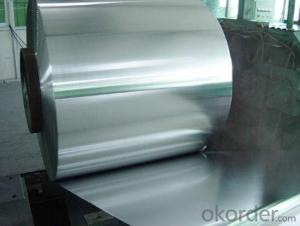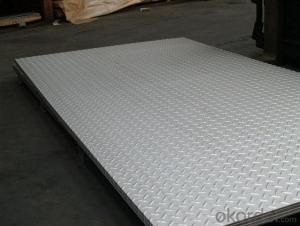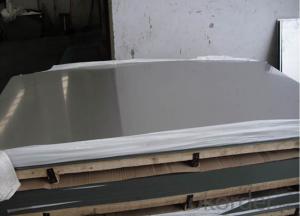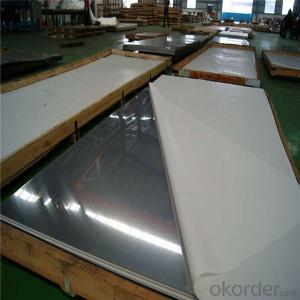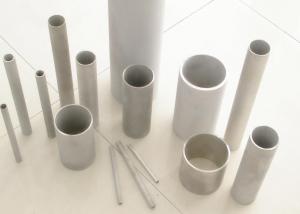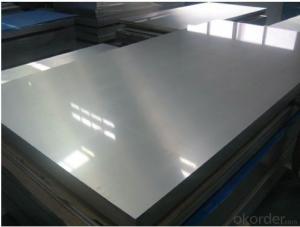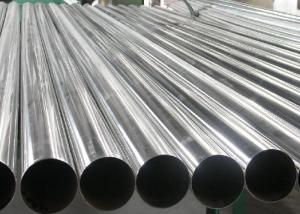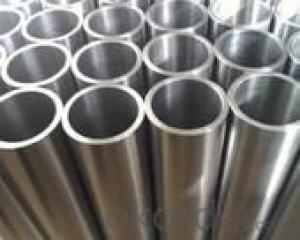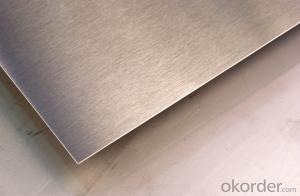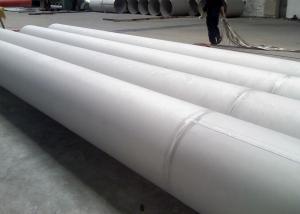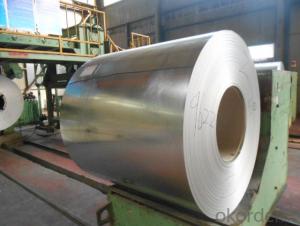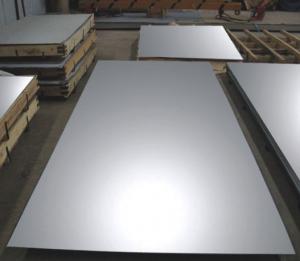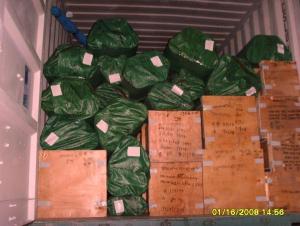316Ti Welded Stainless Steel Tubing
- Loading Port:
- China Main Port
- Payment Terms:
- TT or LC
- Min Order Qty:
- 5 Tons m.t.
- Supply Capability:
- 2000 Tons Per Month m.t./month
OKorder Service Pledge
OKorder Financial Service
You Might Also Like
Stainless Steel Welded Pipe
APPLICATION:
Industrial Fluid Conveying
Boiler,Heat Exchanger and condenser
Sanitary and Thin-wall water pipe
Oil and Gas transportation etc.
Standards :
ASTM A249/A269/A270/A312/A358/A788/A789/A790
DIN/EN 10217/DIN 11850
JIS G3459,GB/T 12771 etc.
SIZES:
|
OUTSIDE DIAMETER |
OD |
WALL THICKNESS | |||
|
SCH 5S |
SCH 10S |
SCH 40S | |||
|
N.B |
NPS |
mm |
mm |
mm |
mm |
|
8 |
1/4' |
13.72 |
- |
- |
2.24 |
|
10 |
3/8' |
17.15 |
- |
- |
2.31 |
|
15 |
1/2' |
21.34 |
1.65 |
2.11 |
2.77 |
|
20 |
3/4' |
26.67 |
1.65 |
2.11 |
2.87 |
|
25 |
1' |
33.4 |
1.65 |
2.77 |
3.38 |
|
32 |
1-1/4' |
42.16 |
1.65 |
2.77 |
3.56 |
|
40 |
1-1/2' |
48.26 |
1.65 |
2.77 |
3.68 |
|
50 |
2' |
60.33 |
1.65 |
2.77 |
3.91 |
|
65 |
2-1/2' |
73.03 |
2.11 |
3.05 |
5.16 |
|
80 |
3' |
88.9 |
2.11 |
3.05 |
5.49 |
|
90 |
3-1/2' |
101.6 |
2.11 |
3.05 |
5.74 |
|
100 |
4' |
114.3 |
2.11 |
3.05 |
6.02 |
|
125 |
5' |
141.3 |
2.77 |
3.4 |
6.55 |
|
150 |
6' |
168.28 |
2.77 |
3.4 |
7.11 |
|
200 |
8' |
219.08 |
2.77 |
3.76 |
8.18 |
|
250 |
10' |
273.05 |
3.4 |
4.19 |
9.27 |
|
300 |
12' |
323.85 |
3.96 |
4.57 |
9.52 |
|
350 |
14' |
355.6 |
3.96 |
4.78 |
11.13 |
|
400 |
16' |
406.4 |
4.19 |
4.78 |
12.7 |
|
450 |
18' |
457.2 |
4.19 |
4.78 |
14.27 |
|
500 |
20' |
508 |
4.78 |
5.54 |
15.09 |
|
550 |
22' |
558.8 |
4.78 |
5.54 |
15.09 |
|
600 |
24' |
609.6 |
5.54 |
6.35 |
17.48 |
|
650 |
26' |
660.4 |
5.54 |
7.92 |
17.48 |
|
700 |
28' |
711.2 |
5.54 |
7.92 |
17.48 |
|
750 |
30' |
762 |
6.35 |
7.92 |
17.48 |
|
800 |
32' |
812.8 |
- |
7.9 |
17.48 |
|
850 |
34 |
863.6 |
- |
7.92 |
17.48 |
|
900 |
36' |
914.4 |
- |
7.92 |
19.05 |
|
1000 |
40' |
1016 |
- |
9.53 |
- |
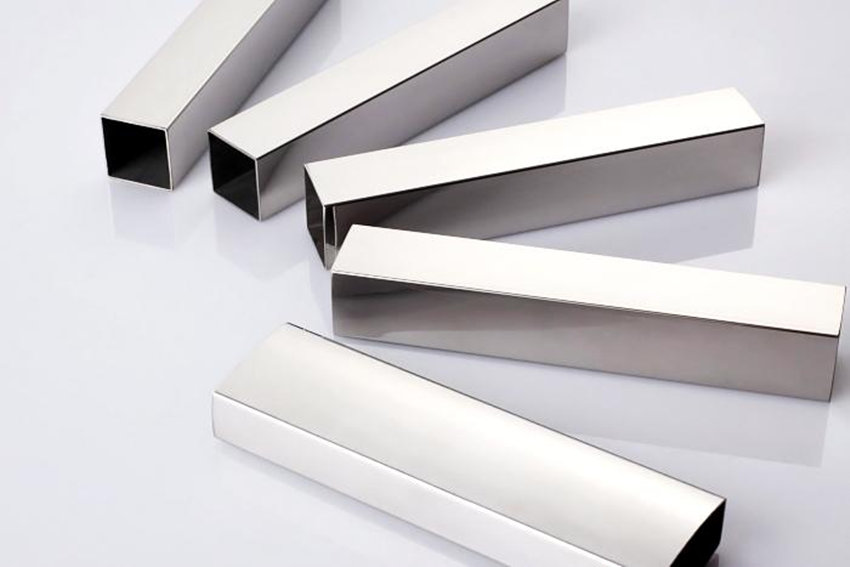
- Q: How do you prevent crevice corrosion in stainless steel sheets?
- To prevent crevice corrosion in stainless steel sheets, several key steps can be taken: 1. Design and fabricate properly: Ensure that the stainless steel sheets have smooth surfaces and minimal crevices during the design and fabrication process. This will decrease the likelihood of trapping stagnant solutions and minimize the possibility of crevice corrosion. 2. Regularly clean and maintain: Clean the stainless steel sheets on a regular basis to eliminate any debris or contaminants that may contribute to crevice corrosion. Mild detergents or specialized stainless steel cleaners can be used for this purpose. 3. Avoid exposure to corrosive environments: Limit the stainless steel sheets' exposure to corrosive surroundings, such as those containing chloride ions (e.g., saltwater). If exposure cannot be avoided, consider applying protective coatings or using higher-grade stainless steel alloys that are more resistant to crevice corrosion. 4. Environmental control: Maintain proper environmental conditions, including temperature, humidity, and pH levels, to minimize the risk of crevice corrosion. Monitoring and controlling these factors can create a less favorable environment for corrosion to occur. 5. Regular inspection and maintenance: Conduct routine inspections to identify any signs of crevice corrosion, such as discoloration, pitting, or rough surfaces. If any corrosion is detected, take immediate action to remove it and repair the affected area. By implementing these preventive measures, the risk of crevice corrosion in stainless steel sheets can be significantly reduced, ensuring their durability and performance.
- Q: Are stainless steel sheets suitable for chemical transport containers?
- Indeed, chemical transport containers can rely on stainless steel sheets. Renowned for its exceptional resistance to corrosion, stainless steel proves highly appropriate for chemical transportation. Its ability to withstand numerous acids, alkalis, and corrosive substances guarantees the preservation and purity of the chemicals throughout transit. Moreover, stainless steel sheets boast durability and strength, delivering structural integrity to the containers and ensuring the secure transportation of chemicals.
- Q: Are stainless steel sheets suitable for elevator control panels?
- Yes, stainless steel sheets are suitable for elevator control panels. Stainless steel is a durable and resistant material that can withstand various environmental conditions, including frequent use and exposure to moisture, heat, and chemicals. Elevator control panels often require a material that is easy to clean, resistant to scratches and dents, and aesthetically pleasing. Stainless steel meets all these criteria, making it an ideal choice for elevator control panels. Additionally, stainless steel has a sleek and modern appearance, which can enhance the overall design of the elevator interior.
- Q: Are stainless steel sheets suitable for storage tanks?
- Yes, stainless steel sheets are suitable for storage tanks. Stainless steel is highly resistant to corrosion and can withstand high temperatures, making it an ideal material for storing various liquids and chemicals. It also has excellent durability and can maintain its structural integrity for a long time, ensuring the safety and longevity of the storage tanks.
- Q: What is the maximum size of stainless steel sheets?
- The maximum size of stainless steel sheets can vary depending on the manufacturer and specific requirements, but commonly available sizes range from 4 feet by 8 feet (1.2 meters by 2.4 meters) to 5 feet by 10 feet (1.5 meters by 3 meters).
- Q: Can stainless steel sheets be used for restaurant equipment?
- Yes, stainless steel sheets can be used for restaurant equipment. Stainless steel is a popular choice for restaurant equipment due to its numerous benefits. It is durable, corrosion-resistant, and easy to clean. Stainless steel sheets can be fabricated into various shapes and sizes to meet the specific requirements of restaurant equipment, such as countertops, sinks, tables, shelves, and food preparation surfaces. Additionally, stainless steel is a hygienic material that does not react with food or contaminate it, making it ideal for use in restaurant settings where cleanliness and food safety are paramount.
- Q: Can stainless steel sheets be used in chemical processing plants?
- Chemical processing plants can utilize stainless steel sheets due to their high resistance to corrosion, which makes them an ideal material for environments with chemical exposure. Stainless steel is capable of enduring exposure to a wide range of chemicals, including acids, alkalis, and solvents, without deteriorating or reacting with them. Furthermore, stainless steel sheets are easily cleaned and maintained, ensuring that they adhere to the stringent hygiene and safety standards demanded in chemical processing plants. Additionally, stainless steel possesses exceptional strength and durability, making it suitable for various applications within the facility, such as tanks, piping, pressure vessels, and heat exchangers. In conclusion, stainless steel sheets are a dependable and versatile option for implementation in chemical processing plants.
- Q: What is the thickness range for stainless steel sheets?
- The thickness range for stainless steel sheets can vary, but it typically falls between 0.4mm to 6mm.
- Q: Are stainless steel sheets suitable for architectural handrails or guardrails?
- Yes, stainless steel sheets are highly suitable for architectural handrails or guardrails. Stainless steel is a popular choice for these applications due to its excellent strength, durability, and corrosion resistance properties. It is able to withstand various weather conditions and is resistant to rust, making it ideal for outdoor installations. Stainless steel sheets can be easily customized and fabricated into different shapes and sizes, allowing for flexibility in design. Additionally, stainless steel has an aesthetic appeal that complements modern architectural designs. It is a low-maintenance material that requires minimal upkeep, making it a cost-effective choice in the long run. Overall, stainless steel sheets are a reliable and versatile option for architectural handrails or guardrails.
- Q: What is the weight of stainless steel sheets?
- The weight of stainless steel sheets may differ based on their thickness and dimensions. Typically, stainless steel sheets possess a density of 8 grams per cubic centimeter. To determine the weight of a stainless steel sheet, one must acquire the dimensions (length, width, and thickness) and multiply them to ascertain the volume. Subsequently, the weight can be determined by multiplying the volume by the density.
1. Manufacturer Overview
| Location | Anhui,China |
| Year Established | 2003 |
| Annual Output Value | Above US$16 Million |
| Main Markets | South Korea;Japan; Europe;ASEAN;India |
| Company Certifications | ISO 9001:2000; |
2. Manufacturer Certificates
| a) Certification Name | |
| Range | |
| Reference | |
| Validity Period |
3. Manufacturer Capability
| a) Trade Capacity | |
| Nearest Port | Shanghai |
| Export Percentage | 70% |
| No.of Employees in Trade Department | 160 People |
| Language Spoken: | English;Chinese;Japanese;Korea |
| b) Factory Information | |
| Factory Size: | Above 300,000 square meters |
| No. of Production Lines | Above 10 |
| Contract Manufacturing | OEM Service Offered;Design Service Offered |
| Product Price Range | Average |
Send your message to us
316Ti Welded Stainless Steel Tubing
- Loading Port:
- China Main Port
- Payment Terms:
- TT or LC
- Min Order Qty:
- 5 Tons m.t.
- Supply Capability:
- 2000 Tons Per Month m.t./month
OKorder Service Pledge
OKorder Financial Service
Similar products
Hot products
Hot Searches
Related keywords
